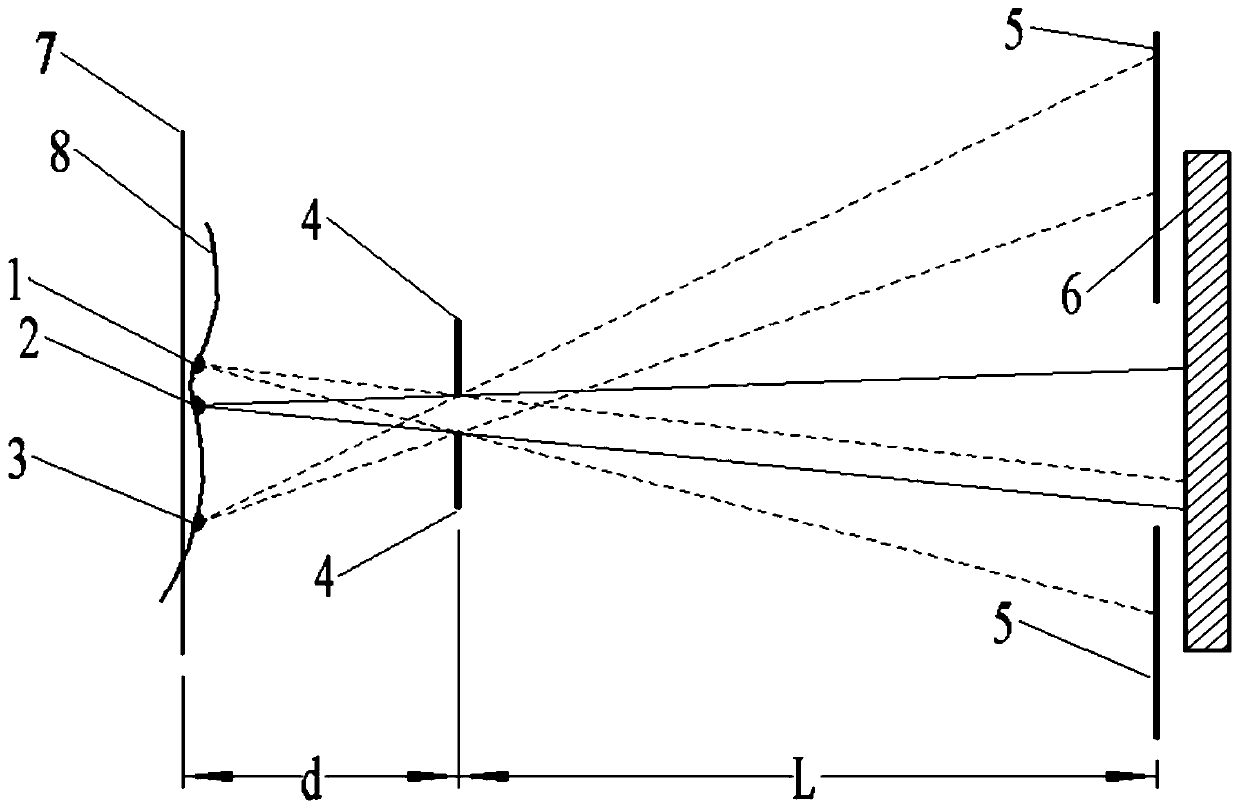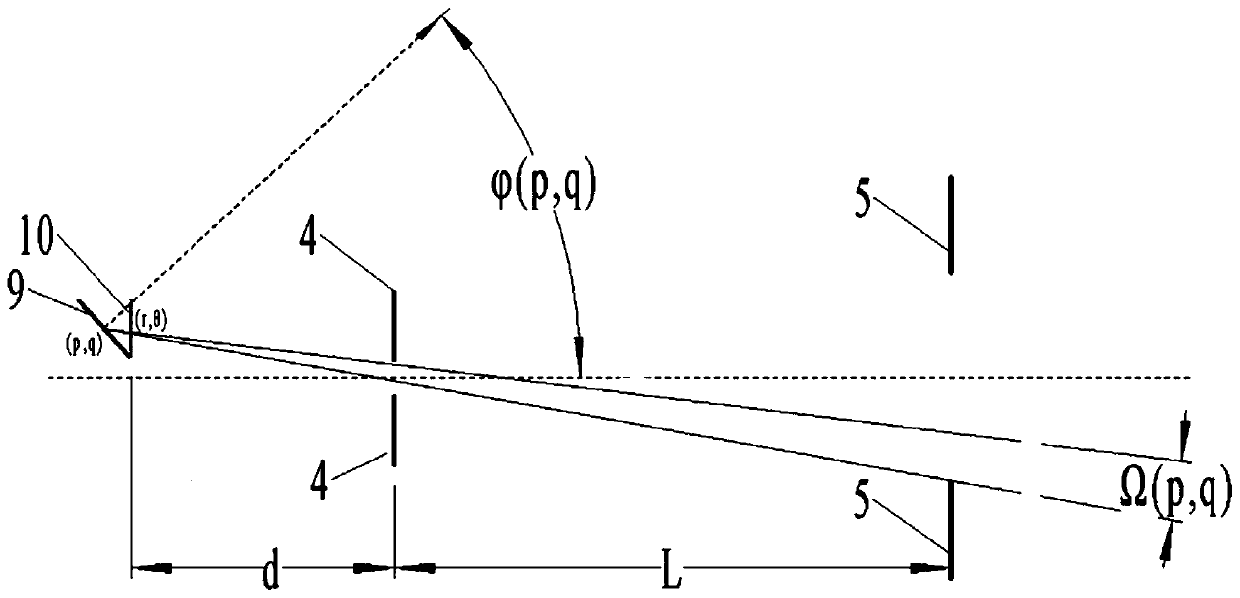Data extraction method of spatial resolution radiation flow detection technology
A data extraction and spatial resolution technology, applied in the field of X-ray measurement, can solve problems such as unintuitive, unfavorable analysis, blurred and complex physical images, etc., and achieve the effect of simplifying physical images and broad application prospects
- Summary
- Abstract
- Description
- Claims
- Application Information
AI Technical Summary
Problems solved by technology
Method used
Image
Examples
Embodiment 1
[0031] The data extraction method of the spatially resolved radiation flow detection technology of the present invention comprises the following steps:
[0032] (1) Measuring the light transmission area S1 of the spatially resolved pinhole;
[0033] (2) Measure the light transmission area S2 of the front limit hole of the detector;
[0034] (3) Measure the distance L from the center of the pinhole to the center of the limiting hole;
[0035] (4) Measure the distance d from the center of the pinhole to the radiation source;
[0036] (5) Measuring the signal intensity Y of the detector in response to the radiation flow passing through the pinhole and passing through the confinement hole;
[0037] (6) Calculate the quasi-radiation source area equivalent to the detector Quasi-field opening angle equivalent to the detector
[0038] (7) Calculate the radiation current intensity I, Where R is the detector response; the radiation current intensity is the power surface density...
Embodiment 2
[0074] The difference between this embodiment and Embodiment 1 lies in that the definition of the equivalent quasi-radiation source area and the quasi-field angle of the detector in this embodiment is different from that of Embodiment 1 in a physical sense.
[0075] In this embodiment, the quasi-radiation source area equivalent to the detector It can be considered as the size of the pinhole area, which is:
[0076]
[0077] The quasi-field angle equivalent to the detector described above can be considered as the angle of the hole-limited area directly to the pinhole That is:
[0078]
[0079] Wherein, L=nd, that is, the distance from the center of the pinhole to the center of the restricted hole.
[0080] The formula for calculating the intensity of the radiation flow is the same as formula (12).
PUM
 Login to View More
Login to View More Abstract
Description
Claims
Application Information
 Login to View More
Login to View More - R&D
- Intellectual Property
- Life Sciences
- Materials
- Tech Scout
- Unparalleled Data Quality
- Higher Quality Content
- 60% Fewer Hallucinations
Browse by: Latest US Patents, China's latest patents, Technical Efficacy Thesaurus, Application Domain, Technology Topic, Popular Technical Reports.
© 2025 PatSnap. All rights reserved.Legal|Privacy policy|Modern Slavery Act Transparency Statement|Sitemap|About US| Contact US: help@patsnap.com



